Investing in the Green Revolution: Navigating the World of Renewable Energy Stocks
Welcome! We’re embarking on a journey into one of the most dynamic and potentially rewarding sectors of the global economy: renewable energy. As you navigate the investment landscape, understanding the forces shaping this industry is crucial. The world is undeniably shifting towards cleaner energy sources, driven by pressing climate concerns, rapid technological advancements, and evolving geopolitical priorities. This isn’t just an environmental movement; it’s an economic transformation, creating significant investment opportunities for those who understand its complexities.
Think of it like mastering a new language. At first, the grammar feels foreign, the vocabulary overwhelming. But with structure, practice, and clear explanations, the pieces fall into place. We’re here to provide that structure for understanding renewable energy stocks.
In this exploration, we’ll uncover why this sector is experiencing such explosive growth, delve into the crucial role government policy plays, dissect the different technologies driving the transition, spotlight some key players you might encounter, and importantly, examine the risks that come with this exciting frontier. Our goal is to equip you, whether you’re an investment newcomer or a seasoned trader looking to deepen your technical analysis, with the knowledge to make informed decisions.
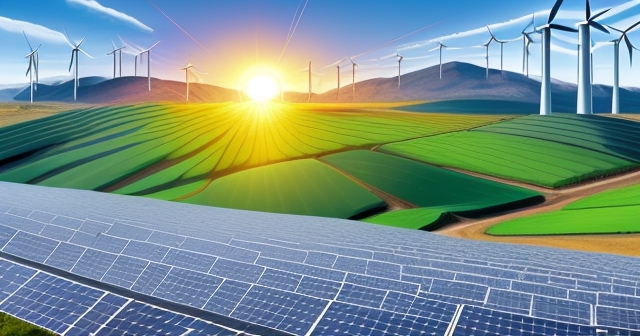
The global energy landscape is undergoing a fundamental restructuring. For centuries, our economies have been powered predominantly by fossil fuels – coal, oil, and natural gas. These sources powered the industrial revolution and much of modern life, but they come with significant environmental costs, notably greenhouse gas emissions that contribute to climate change. Now, a powerful confluence of factors is accelerating a move towards cleaner, renewable alternatives.
Why is this happening now? Primarily, three major forces are at play:
- Climate Imperative: The increasing global awareness and impact of climate change are driving governments, corporations, and individuals to seek lower-carbon energy solutions. Reducing our carbon footprint is no longer a niche concern; it’s a global priority influencing policy and investment decisions at the highest levels.
- Technological Advancement and Falling Costs: The past decade has seen dramatic reductions in the cost of generating electricity from solar and wind power. Solar panels and wind turbines have become significantly more efficient and cheaper to manufacture and install. This makes renewable energy economically competitive, and often cheaper, than building new fossil fuel plants in many regions. Think of how the cost of computing power or smartphones has plummeted over time – we’re seeing a similar trajectory in renewable energy technology.
- Energy Security and Independence: Relying heavily on fossil fuels often means depending on imports from potentially unstable regions, creating geopolitical vulnerabilities. Developing domestic renewable energy sources enhances energy security, reduces reliance on volatile global energy markets, and keeps energy spending within national borders.
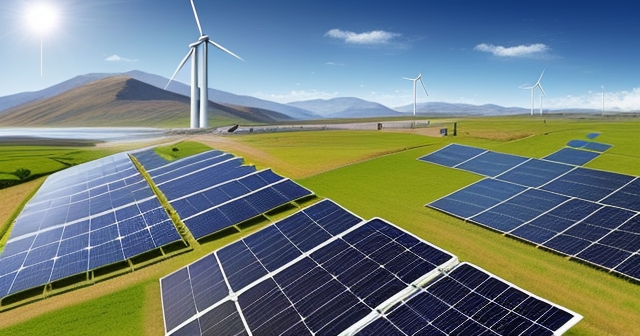
These forces are not temporary; they represent a long-term structural shift, a true megatrend. Data from organizations like the Energy Information Administration (EIA) and the International Energy Agency (IEA) underline this transformation. The EIA, for instance, projects substantial growth in U.S. renewable generation capacity by 2050, with solar capacity potentially increasing by 325% and wind by 138%. The IEA forecasts that renewables could account for over 42% of global electricity generation by as early as 2028. These are not small increases; they represent a fundamental re-engineering of our energy infrastructure.
As investors, recognizing a megatrend is key. It signifies a large-scale shift that is likely to create sustained opportunities, although navigating it requires understanding the nuances and potential roadblocks.
Policy Crossroads: The Impact of Government Support and Uncertainty
While the fundamental drivers of cost reduction and climate concern are powerful, the pace and direction of the energy transition are heavily influenced by government policy. Policies act like accelerators or brakes on development, providing incentives, setting mandates, or imposing regulations.
In the United States, a significant recent policy development was the Inflation Reduction Act (IRA) passed in 2022. This legislation provided substantial tax credits and incentives for clean energy projects, including solar, wind, battery storage, and electric vehicles. The IRA has been a major catalyst, spurring investment and accelerating project development across the country. Interestingly, these clean energy investments fostered by the IRA have benefited projects in many congressional districts, including those represented by Republicans, illustrating how the economic benefits of clean energy can transcend traditional political divides.
However, government policy can also introduce significant uncertainty and risk. The political landscape is constantly shifting, and future administrations or legislative bodies could alter or repeal existing policies. For example, there are ongoing discussions and proposals, such as a potential U.S. House bill aiming to repeal significant renewable energy subsidies (tax credits for solar, wind, storage, EVs). Such a repeal could dramatically alter the economics of renewable energy projects, potentially making them less profitable or even unviable.
Consider the impact: If a solar or wind farm relies on a certain percentage of its projected return on investment coming from federal tax credits, removing those credits fundamentally changes the project’s financial model. This could lead to cancelled projects, reduced demand for equipment and services, and potentially financial distress for companies heavily reliant on these incentives.
Despite this policy risk, is a complete reversal of the renewable energy trend likely? Many analysts believe a total halt is improbable, even under potentially less favorable administrations. Why?
- Economic Benefits: As mentioned, clean energy projects create jobs and economic activity, often in regions that need it. These benefits can build local support.
- Falling Costs: Even without subsidies, renewable energy is becoming increasingly cost-competitive on its own.
- Energy Security: The desire for domestic energy production and reduced reliance on foreign sources remains a strong motivator, regardless of climate policy stances.
- State and Local Action: Many states and municipalities have set their own renewable energy targets and policies that exist independently of federal actions.
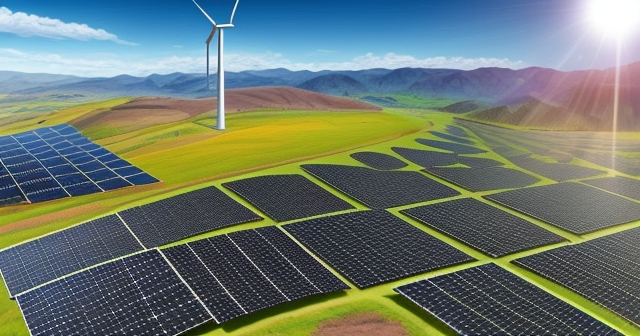
So, while policy shifts, particularly regarding subsidies, represent a significant risk for investors in this sector, the underlying economic and technological momentum suggests that the transition, while potentially slowed or redirected, is likely to continue. As an investor, you must pay close attention to the political dialogue and understand how proposed policy changes could impact the financial models of the companies you’re considering.
The Ecosystem of Green Energy: Key Technologies and Business Models
When we talk about renewable energy stocks, we’re not just talking about companies that put up solar panels. The sector is a complex ecosystem involving diverse technologies and business models. Understanding these different components is vital for assessing potential investments.
The core technologies driving the transition include:
- Solar Energy: Converting sunlight into electricity using photovoltaic (PV) panels. This includes traditional polysilicon-based panels, but also newer technologies like cadmium telluride (CdTe) thin-film technology used by companies like First Solar. Solar power can be deployed at various scales, from rooftop installations on homes (distributed generation) to massive utility-scale solar farms. Key components include the panels themselves and micro-inverter systems (like those from Enphase Energy) that manage and optimize the power output from individual panels.
- Wind Energy: Capturing kinetic energy from wind using turbines. This can be done onshore or increasingly, offshore in the ocean. Companies like GE Vernova (GEV) and Vestas Wind Systems (VWS) manufacture the turbines.
- Battery Storage: Storing electricity generated from intermittent sources like solar and wind so it can be used when the sun isn’t shining or the wind isn’t blowing. Battery Energy Storage Systems (BESS) are critical for grid stability and enabling higher penetration of renewables. Companies like Fluence Energy (FLNC) provide these systems.
- Grid Infrastructure: The electricity grid needs significant upgrades to handle decentralized renewable generation and the increasing load from electric vehicles. This involves new transmission lines, transformers, and sophisticated software for grid management. The demand for essential components like wiring and cables (provided by companies like Nexans SA) is set to grow substantially.
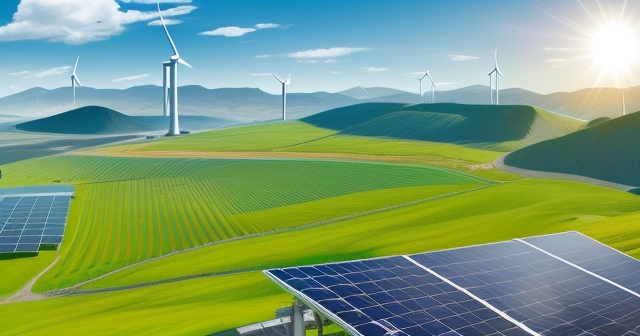
Beyond these primary generation and storage technologies, other renewables include hydropower (electricity from water), geothermal energy (heat from the earth), and biomass (burning organic matter). Emerging areas like green hydrogen (produced using renewable electricity) and renewable natural gas are also gaining traction.
Companies operating in this space often fall into several categories with distinct business models:
- Utilities: Traditional power companies that are increasingly adding renewable assets to their generation mix. Companies like NextEra Energy (NEE) have become leaders in wind and solar development alongside their regulated utility operations. Their business models often involve stable earnings from serving a captive customer base, providing a degree of stability.
- Renewable Power Producers/Developers: Companies focused specifically on developing, owning, and operating renewable energy projects (solar farms, wind farms, hydro plants). Companies like Brookfield Renewable (BEPC/BEP) and Clearway Energy (CWEN/CWEN.A) are examples. Their revenue is typically generated through long-term Power Purchase Agreements (PPAs). Think of a PPA like a long-term contract where the renewable project owner agrees to sell electricity to a utility, corporation, or other buyer at a fixed or predictable price for many years (often 10-20 years or more). This provides stable, predictable cash flow, which is a key attraction for investors seeking income and stability.
- Equipment Manufacturers and Technology Providers: Companies that design, manufacture, or install the physical components (panels, turbines, inverters, batteries) or provide software and services for project development and operation. Enphase Energy, First Solar, GE Vernova, and Fluence Energy fall into this category. Their revenue is more tied to the pace of project deployment and technology cycles.
- Infrastructure and Component Suppliers: Companies providing the foundational elements like cables (Nexans SA) or specialized services.
Understanding which part of the ecosystem a company operates in is vital. A utility with significant renewable assets might offer more stable dividends, while a technology provider could offer higher growth potential but also greater volatility tied to manufacturing costs and technology adoption rates. Companies heavily reliant on developing new projects are highly sensitive to policy incentives and financing conditions, whereas those with large, contracted asset bases (like those with many long-term PPAs) offer more predictable cash flows.
Spotlight on Opportunity: Profiles of Leading Renewable Energy Stocks
With the complexity of the sector in mind, let’s look at a few companies that are often highlighted in discussions about renewable energy investments. Remember, these are examples to illustrate the types of businesses in this space, and any investment requires your own thorough research and due diligence.
Consider companies like NextEra Energy (NEE). NextEra is one of the largest utilities in the U.S., primarily operating Florida Power & Light. Crucially, it also has a massive clean energy generation arm, NextEra Energy Resources, which is a world leader in generating electricity from the wind and sun. NEE often appeals to investors because it combines the relative stability of a regulated utility business with the growth potential of its large-scale renewable development activities. The company has a track record of strong earnings per share (EPS) and dividend growth, and its large pipeline of planned projects provides good visibility into future growth. They’ve also set ambitious targets, aiming to eliminate carbon emissions from their operations by 2045, a significant commitment from a major utility.
Then there’s Brookfield Renewable Corporation (BEPC) or its limited partnership equivalent Brookfield Renewable Partners (BEP). These entities are pure-play renewable power generators managed by Brookfield Asset Management. They own a highly diversified portfolio of assets globally, including hydro, wind, solar, and energy storage. Their strength lies in this diversification – across technologies and geographies – and their business model centered on long-term PPAs, which provide stable cash flow often indexed to inflation. Brookfield Renewable has a history of increasing its dividends and funding growth through reinvesting cash flow and smart financing. Their focus is on acquiring, developing, and operating high-quality renewable assets.
Looking at the technology side, First Solar (FSLR) is a prominent player. Unlike many solar panel manufacturers that use polysilicon (often sourced from regions with potential supply chain concerns like Xinjiang), First Solar utilizes cadmium telluride (CdTe) thin-film technology. This gives them a degree of insulation from certain supply chain risks and, they argue, offers a lower carbon footprint in manufacturing. First Solar primarily serves the utility-scale solar market and has benefited significantly from U.S. policy like the IRA, which includes incentives for domestically manufactured components. Their performance can be more volatile than utilities or diversified asset owners, as it is closely tied to the pace of large project development and the cost of raw materials.
Fluence Energy (FLNC) is another interesting technology-focused company, specializing in battery energy storage systems and services. As the grid incorporates more variable renewable sources like solar and wind, the need for reliable, utility-scale battery storage explodes. Fluence provides the hardware, software, and services to make this happen. Their growth is directly linked to the build-out of storage capacity globally, driven by grid modernization and renewable integration needs.
Companies like Clearway Energy (CWEN/CWEN.A) also operate U.S. renewable energy facilities (wind, solar, and some natural gas) with stable cash flows largely underpinned by PPAs. They are another example of an asset owner/operator model focused on predictable income streams.
These examples represent different facets of the renewable energy investment landscape – from large, stable utilities transitioning to green energy, to diversified global asset owners, to specialized technology providers. Each offers a different risk/reward profile, and understanding these differences is key to building a diversified portfolio within the sector.
Risks and Considerations for Investors
No investment is without risk, and the renewable energy sector, despite its compelling growth narrative, presents its own set of challenges that you must consider.
The most significant and perhaps most volatile risk currently is political and regulatory uncertainty. As we discussed, policies like tax credits and subsidies are crucial to the economics of many renewable projects. Proposals to repeal or significantly alter these incentives, such as the potential U.S. House bill targeting IRA tax credits, pose a direct threat. Such changes could lead to:
- Reduced Project Profitability: Making planned projects less attractive or even financially unfeasible.
- Decreased Demand: Developers may slow down or cancel new projects if the economics worsen.
- Impact on Stock Prices: Companies heavily reliant on these incentives (especially manufacturers or developers with less stable balance sheets) could see significant declines in their stock value.
- Financing Challenges: The availability and cost of financing for new projects could increase if the policy environment becomes less certain.

This policy risk is like a potential storm cloud on the horizon. While the long-term forecast for renewables looks sunny, a sudden policy shift could bring turbulence.
Beyond policy, other significant risks include:
- Grid Integration Challenges: Integrating large amounts of variable renewable energy (like solar and wind, which only produce power when the sun shines or the wind blows) into the existing electricity grid is technically complex and requires significant investment in infrastructure like transmission lines and storage. The grid wasn’t originally designed for this decentralized, intermittent power flow.
- Supply Chain Issues: While some companies are mitigating this (like First Solar avoiding Xinjiang polysilicon), the global supply chains for components like solar panels, rare earth magnets for turbines, and battery materials can be subject to geopolitical tensions, trade disputes, and disruptions.
- Intermittency and Reliability: Solar and wind power are by nature intermittent. While battery storage is the primary solution, ensuring consistent, reliable power supply 24/7 requires a complex mix of generation sources and storage solutions. This reliability challenge is often cited by critics and can influence policy debates.
- Initial Environmental Costs: While renewables have lower operational carbon emissions, the manufacturing and installation of panels, turbines, and batteries do have an initial environmental footprint. Responsible investors consider the full lifecycle impact.
- Valuation Risk: Given the strong growth narrative, some renewable energy stocks can trade at high valuations (price-to-earnings ratios). If growth slows, or if risks materialize, highly valued stocks can experience sharp pullbacks.
As you approach investing in this sector, a cautious and informed perspective is essential. Don’t just chase the growth story; understand the potential pitfalls. Diversifying your investments within the sector (e.g., owning a mix of utilities, asset owners, and technology providers), focusing on companies with strong balance sheets and clear pathways to profitability, and staying informed about policy developments are all crucial steps in managing these risks.
Understanding Company Financials in the Renewable Space
Evaluating companies in the renewable energy sector requires looking beyond standard metrics sometimes, especially for asset owners. While traditional metrics like Earnings Per Share (EPS) are important, others provide deeper insights into the financial health and performance of businesses that rely on long-term assets and contracts.
For companies that own and operate large-scale renewable projects, like Brookfield Renewable or Clearway Energy, Funds From Operations (FFO) or Cash Available for Distribution (CAFD) are often more relevant metrics than GAAP (Generally Accepted Accounting Principles) EPS. This is because renewable assets have significant depreciation expenses for accounting purposes, which can lower reported EPS but don’t reflect the actual cash generated by the project, especially when that cash flow is secured by long-term PPAs. FFO and CAFD aim to provide a clearer picture of the underlying operational cash flow available to the company, often used to pay dividends or fund new investments. Think of FFO like the operational cash a landlord generates from renting out properties – it gives a better sense of the ongoing financial health of the asset base than a net income figure distorted by non-cash accounting items.
For equipment manufacturers like First Solar or Enphase Energy, traditional manufacturing metrics like gross margins, order backlogs, and inventory levels are crucial. Their financial performance is more directly tied to manufacturing efficiency, sales volumes, and the pace of installation projects globally.
Utilities like NextEra Energy are often evaluated on their regulated asset base growth, authorized rates of return, and their ability to execute on large infrastructure projects (both traditional and renewable). Their dividend growth track record is also a key metric for income-focused investors.
Regardless of the specific business model, always examine a company’s balance sheet. Developing large renewable projects is capital-intensive, and companies often take on significant debt. A strong balance sheet with manageable debt levels provides resilience against market downturns or financing challenges. Look at metrics like the debt-to-equity ratio or interest coverage ratio.
Also, pay attention to the project backlog. For developers and asset owners, a large backlog of signed PPAs or projects under construction provides visibility into future revenue and growth. It’s like a manufacturing company having a large order book – it indicates future business activity.
| Company | Key Technology | Business Model |
|---|---|---|
| NextEra Energy (NEE) | Wind and Solar | Utilities with clean energy generation |
| BROOKFIELD Renewable (BEPC) | Hydro, Wind, Solar | Renewable Power Producers |
| First Solar (FSLR) | Solar Panels | Equipment Manufacturers |
| Fluence Energy (FLNC) | Battery Energy Storage | Technology Providers |
By using these sector-specific metrics alongside traditional financial analysis, you can gain a more comprehensive understanding of a renewable energy company’s financial performance and its ability to sustain growth and generate returns for shareholders.
Investment Approaches in Renewable Energy
You have several avenues to explore if you’re interested in investing in the renewable energy sector, each with its own characteristics.
One common approach is investing in individual stocks of companies like those we’ve discussed (NextEra Energy, Brookfield Renewable, First Solar, etc.). This allows you to target specific companies you believe are best positioned for success, whether based on their technology, business model, market position, or financial strength. Investing in individual stocks requires significant research into each company’s fundamentals, management team, competitive landscape, and risks. It offers the potential for higher returns if you pick winners, but also comes with higher risk if a specific company underperforms or faces unique challenges.
Alternatively, you could consider Exchange Traded Funds (ETFs) that focus on the renewable energy sector. ETFs offer instant diversification by holding a basket of stocks related to the theme. Examples include ETFs tracking global clean energy companies or those focused specifically on solar, wind, or hydrogen. Investing in an ETF reduces company-specific risk – if one company in the fund performs poorly, its impact on your overall investment is limited by the performance of the other holdings. ETFs are generally considered a lower-cost and simpler way to gain exposure to a sector compared to building a diversified portfolio of individual stocks yourself. However, you still need to research the ETF’s holdings, expense ratio, and how well it tracks the underlying sector or index.
Beyond traditional stock investing, some may explore more complex instruments like CFD trading (Contract for Difference). Trading CFDs allows you to speculate on the price movements of renewable energy stocks (or other assets) without actually owning the underlying stock. CFDs often involve leverage, meaning you can control a large position with a relatively small amount of capital. While leverage can magnify profits if the market moves in your favor, it also significantly magnifies losses if the market moves against you. Trading CFDs is considered high-risk and is generally not suitable for beginners or those who are risk-averse. It requires a deep understanding of leverage, margin calls, and rapid market movements.
For those interested in aligning their investments with their values, the renewable energy sector is a natural fit for Socially Responsible Investing (SRI) or ESG (Environmental, Social, Governance) investing strategies. Many investors explicitly seek out companies that are contributing positively to environmental goals, such as reducing carbon emissions.
Finally, some newer investors might consider using robo-advisors, which are automated investment platforms. Some robo-advisors offer options to invest in portfolios aligned with ESG principles, which would typically include exposure to renewable energy stocks or ETFs.
The right approach for you depends on your investment goals, risk tolerance, available capital, and how much time you’re willing to dedicate to research. Starting with a diversified ETF might be a sensible first step for beginners, while experienced investors comfortable with research might explore individual stocks.
The Interplay with Broader Energy Markets
It’s also important to see renewable energy stocks not in isolation, but within the context of the broader energy markets. While the long-term trend is clear, the pace of transition and the profitability of renewable projects can still be influenced by prices and developments in fossil fuel markets.
For example, sustained periods of high oil and natural gas prices can sometimes make renewable alternatives look even more economically attractive. Conversely, low fossil fuel prices could potentially slow down the transition if they make traditional power generation cheaper in the short term, although this effect is diminishing as renewable costs continue to fall.
Furthermore, many utilities that are investing heavily in renewables (like NextEra Energy) still operate significant natural gas or other fossil fuel assets. Their financial performance is therefore influenced by both their renewable growth and the performance of their traditional energy businesses. Understanding this mix is crucial when analyzing such companies.
The demand for electricity is also a key factor. Growing demand, driven by factors like population growth, industrialization, and increasingly, the massive power needs of data centers for Artificial Intelligence (AI) and other computing, provides a tailwind for all forms of power generation, including renewables. Companies that can reliably supply this growing demand, especially with clean sources, stand to benefit.
The transition is not an overnight flip of a switch. It’s a complex, multi-decade process where renewables will increasingly displace, but likely coexist with, traditional energy sources for a significant period. This interplay means that factors influencing traditional energy markets can still have ripple effects on the renewable sector.
Policy Dynamics: A Deeper Dive into the Political Landscape
Let’s circle back to policy, as its potential impact is too significant to underestimate. The nuances of how policy is enacted, challenged, and potentially rolled back are critical for renewable energy investors.
Consider the U.S. context again. The IRA’s clean energy tax credits were designed to be long-term, providing certainty for developers planning projects that take years to build. A bill proposing to repeal these credits highlights the fragility of policy support. Such proposals are often debated vigorously and their passage is not guaranteed, but the mere possibility introduces volatility and can make securing financing for new projects more difficult.
The debate often centers on the cost of subsidies versus the long-term benefits of clean energy (job creation, energy security, environmental improvements). Arguments against subsidies typically focus on taxpayer cost and market distortion, while arguments for them emphasize overcoming initial market barriers, accelerating technology adoption, and achieving broader societal goals like climate mitigation.
Furthermore, the implementation details of policies matter. How tax credits are claimed, who is eligible, and what requirements must be met can significantly impact which projects get built and which companies benefit most. Regulatory processes at the state and local levels, such as permitting for new transmission lines or the siting of solar and wind farms, can also create bottlenecks and delays, regardless of federal incentives.
As investors, staying informed means following legislative debates, understanding the positions of key political figures and parties, and assessing the likelihood of proposed policy changes becoming reality. Companies that have strong government relations teams or diversified operations across geographies with different policy environments may be better positioned to navigate this uncertainty.
Long-Term Outlook and the Road Ahead
Despite the risks and complexities, the long-term outlook for renewable energy remains compelling. The fundamental drivers – climate necessity, cost competitiveness, and energy security – are not disappearing. Trillions of dollars are expected to be invested annually in clean energy infrastructure and technologies over the coming decades to meet global decarbonization goals.
Think of this transition as a massive, multi-decade infrastructure build-out. It’s not just about building power plants; it’s about transforming the entire energy system, from generation and transmission to distribution and consumption (e.g., electric vehicles, electrified heating). This provides opportunities across the value chain, from companies mining the necessary materials to those providing grid software solutions.
However, the path forward will likely not be a smooth upward trajectory. There will be periods of accelerated growth, pauses, and potential setbacks influenced by policy shifts, economic cycles, technological breakthroughs, and unforeseen events. The ability of the renewable energy sector to overcome challenges related to grid integration, energy storage deployment at scale, and ensuring system reliability will be crucial for sustained success.
For you as an investor, this means adopting a long-term perspective. Trying to time the market based on short-term policy debates or quarterly earnings reports can be challenging. Instead, focus on identifying high-quality companies with strong management, solid financials, technological advantages, and clear growth strategies that are well-positioned to benefit from the multi-decade transition ahead, while also being mindful of the risks we’ve discussed.
Conclusion: Positioning Yourself in the Green Energy Transition
Investing in renewable energy stocks offers you a unique opportunity to participate in one of the most significant economic and environmental shifts of our time. We’ve explored the powerful forces propelling this transition, from climate concerns and falling costs to the critical role of government policy. We’ve also looked at the diverse ecosystem of technologies and business models that make up this sector, and spotlighted examples of leading companies operating within it.
Remember, while the potential for growth is substantial, this sector is not without its challenges, particularly the significant uncertainties posed by potential policy changes. Understanding these risks and how they could impact specific companies is just as important as understanding the growth story.
As you consider your investment journey, whether you choose individual stocks, diversified ETFs, or another approach, the principles remain the same: conduct thorough research, understand what you’re investing in, assess the risks, and align your investments with your own financial goals and risk tolerance. The renewable energy sector is complex, but with careful analysis and a long-term perspective, it can offer compelling opportunities for those who are ready to navigate its dynamic landscape.
The transition to a cleaner energy future is underway. By deepening your understanding of this sector, you position yourself not just to potentially benefit financially, but also to be a part of a global movement shaping the future of energy.
best renewable energy stocksFAQ
Q:What are the key factors driving the growth of renewable energy stocks?
A:The key factors include technological advancements leading to lower costs, increasing climate awareness, and the push for energy independence.
Q:How can I invest in renewable energy stocks?
A:You can invest by purchasing individual stocks, investing in ETFs, or using robo-advisors that focus on renewable energy.
Q:What risks should I be aware of when investing in renewable energy?
A:Risks include political and regulatory uncertainty, supply chain challenges, and the intermittency of renewable energy sources.
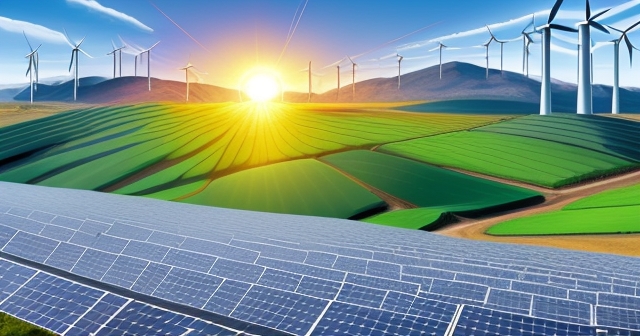
留言